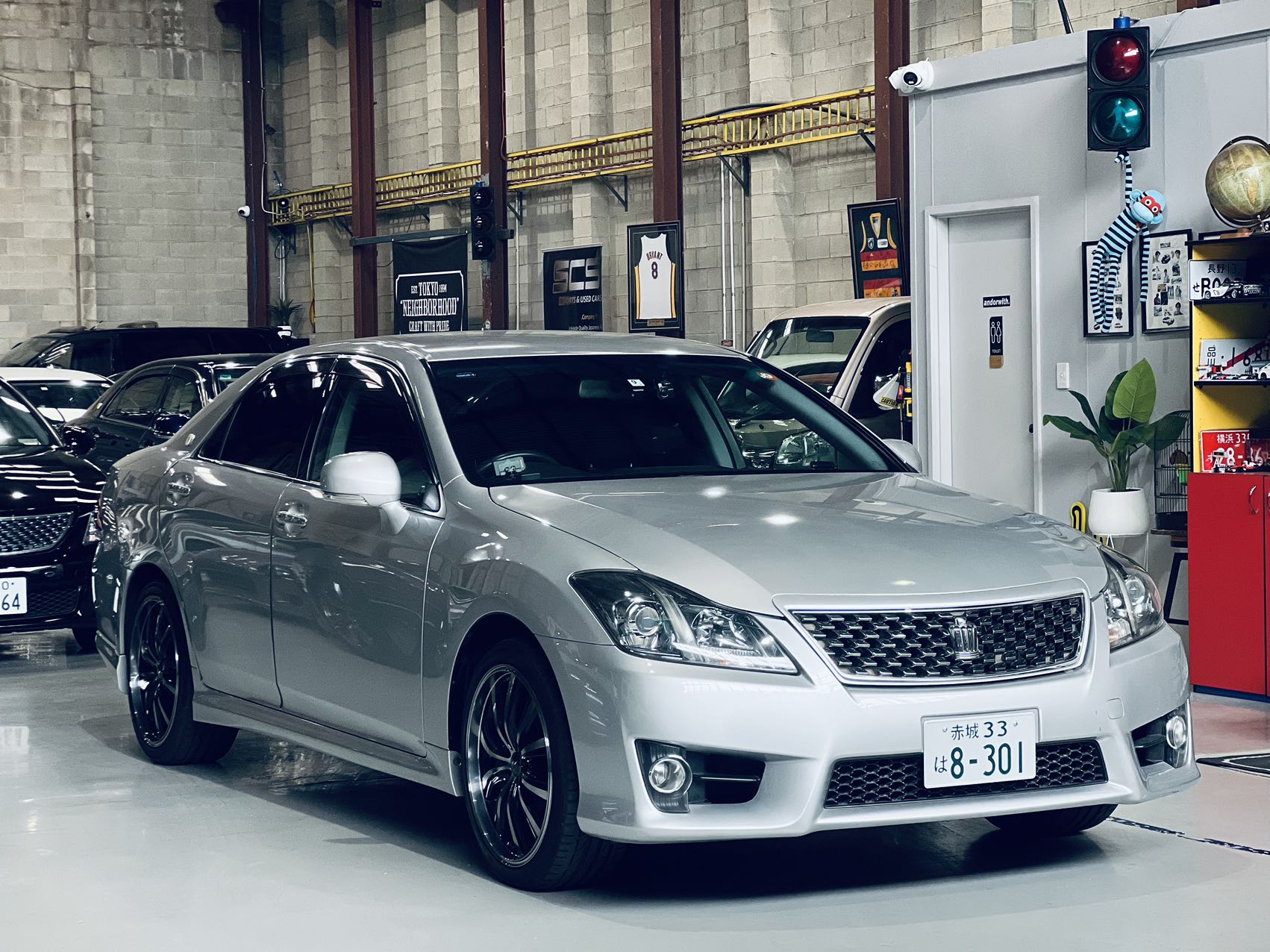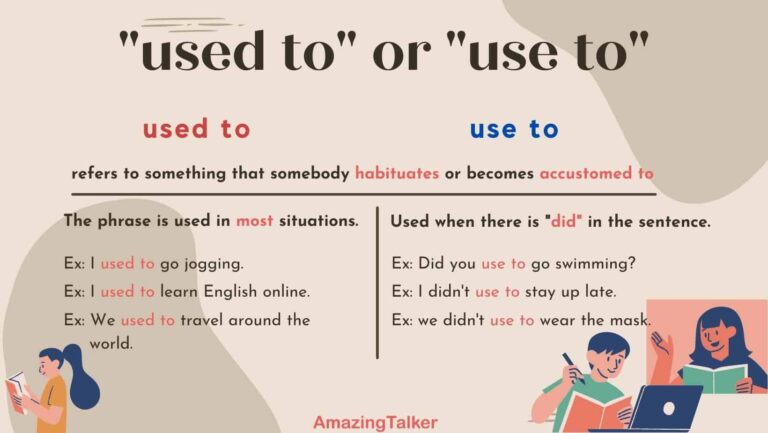2010 Jeep Compass And Patriots For Sale: Your Guide to an Affordable Adventure
2010 Jeep Compass And Patriots For Sale: Your Guide to an Affordable Adventure jeeps.truckstrend.com
In the vast landscape of the used car market, certain vehicles stand out for their blend of affordability, practicality, and a touch of adventurous spirit. Among these, the 2010 Jeep Compass and Patriot frequently appear as compelling options for budget-conscious buyers seeking a compact SUV. Born from a shared platform but offering distinct personalities, these two siblings from the iconic Jeep brand represent an accessible entry point into the SUV segment, often promising more utility than a traditional sedan without the bulk of larger SUVs. This comprehensive guide will delve into what makes the 2010 Jeep Compass and Patriot relevant today, what to look for when buying, and how to navigate the purchasing process to find your ideal pre-owned vehicle.
Shared Heritage, Distinct Personalities: A Brief Overview of the 2010 Jeep Compass and Patriot
2010 Jeep Compass And Patriots For Sale: Your Guide to an Affordable Adventure
At their core, the 2010 Jeep Compass and Patriot share the same "GS" platform, a collaborative effort with Mitsubishi that also underpinned the Dodge Caliber and Mitsubishi Lancer. This common foundation means they share many mechanical components, including engines and transmissions. However, Jeep masterfully differentiated them to appeal to distinct consumer tastes.
The Jeep Compass was designed to be the more urban-friendly and stylish of the pair. With its rounded lines, contemporary grille, and more car-like appearance, it aimed to attract buyers looking for a compact crossover with a hint of Jeep ruggedness, but without the traditional boxy aesthetic. It was positioned as a practical, fuel-efficient choice for city dwellers and small families.
The Jeep Patriot, conversely, embraced Jeep’s classic, no-nonsense design language. Its upright windshield, traditional seven-slot grille, and boxy silhouette evoked the spirit of the original Cherokee. The Patriot was marketed towards those who appreciated Jeep’s heritage and desired a vehicle that looked and felt more like a traditional SUV, even if its capabilities were on the lighter side of the off-road spectrum. It offered a more rugged, utilitarian appeal.
Both vehicles were crucial for Jeep, serving as entry-level models that expanded the brand’s reach to a wider demographic, particularly those prioritizing fuel economy and a lower price point over extreme off-road prowess.
Under the Hood: Engine, Performance, and Drivetrain Options
The 2010 Compass and Patriot offered a straightforward powertrain lineup, designed for efficiency and practicality rather than thrilling performance.
- Engines:

- 2.0-liter "World Engine" I4: Standard on FWD Sport models, this engine produced 158 horsepower and 141 lb-ft of torque. While adequate for city driving, it could feel a bit underpowered on highways or when fully loaded.
- 2.4-liter "World Engine" I4: This was the more common and recommended option, producing 172 horsepower and 165 lb-ft of torque. It offered a noticeable improvement in acceleration and overall drivability, especially for AWD models.
- Transmissions:

- 5-speed Manual: Available with both engines, this transmission offered more driver engagement and could sometimes squeeze out a bit more performance and fuel economy.
- Continuously Variable Transmission (CVT): This was the more popular automatic option. While designed for smooth, efficient power delivery, CVTs in this era often suffered from a "rubber band" effect, where engine RPMs would rise without a corresponding increase in speed, leading to a droning sound. Regular maintenance is crucial for the longevity of these units.
- Drivetrain Options:

- Front-Wheel Drive (FWD): Standard on all models, providing good fuel efficiency and sufficient traction for most paved roads.
- Freedom Drive I (FD I): An optional full-time all-wheel-drive (AWD) system. It automatically sends torque to the rear wheels when slippage is detected, improving traction in light snow or on slippery surfaces. It also featured a "Lock" mode for distributing torque 50/50 between front and rear axles for better traction in very low-speed situations.
- Freedom Drive II (FD II) Off-Road Group: Exclusively available on the Patriot and only with the 2.4L engine and CVT, this package was designed for more serious light off-roading. It included a low-range mode for the CVT (providing a simulated 19:1 crawl ratio), skid plates, tow hooks, an engine oil cooler, and larger tires. Vehicles equipped with FD II were "Trail Rated," signifying their capability in various off-road conditions like traction, ground clearance, maneuverability, articulation, and water fording (within limits).
Fuel economy for both models typically ranged from 21-23 MPG combined for FWD models and 19-21 MPG combined for AWD/FD II models, depending on engine and transmission.
Exploring the 2010 Jeep Compass: Style Meets Urban Utility
The 2010 Jeep Compass aimed to blend Jeep’s adventurous spirit with a more refined, car-like driving experience suitable for urban and suburban environments.
- Design Aesthetics: Its soft, rounded edges, sloping roofline, and distinct headlamp design set it apart from its boxier sibling. It felt more like a lifted hatchback than a traditional SUV.
- Interior Features and Comfort: The interior, while largely shared with the Patriot, had a slightly more modern feel, often featuring brighter trim accents. Standard features on the Sport trim included a four-speaker CD stereo with an auxiliary input, air conditioning, and full power accessories. Higher Latitude and Limited trims added comforts like alloy wheels, heated front seats, power driver’s seat, satellite radio, Boston Acoustics sound system, and even a sunroof. The rear seats offered decent space for two adults, and the cargo area, while not massive, was practical, offering 23 cubic feet behind the rear seats and up to 53.6 cubic feet with them folded.
- Target Audience: The Compass was ideal for individuals or small families seeking an affordable, compact SUV for daily commuting, errands, and occasional road trips. Its FWD options made it an economical choice for those who didn’t need AWD, while the FD I option provided extra confidence in inclement weather.
Delving into the 2010 Jeep Patriot: Rugged Simplicity for the Adventurous
The 2010 Jeep Patriot, on the other hand, was Jeep’s nod to its heritage, offering a traditional SUV look and feel in a compact package.
- Design Aesthetics: Its upright stance, flat roofline, and classic Jeep grille and round headlights gave it an undeniable resemblance to older Jeep models like the Cherokee. It exuded a more rugged, utilitarian vibe.
- Interior Features and Functionality: The interior was functional and straightforward, prioritizing durability over luxury. While sharing components with the Compass, the Patriot often featured more subdued interior colors and textures. Cargo space was similar to the Compass, offering good utility for its size. The rear seats could recline slightly, and the front passenger seat could fold flat on some trims, allowing for longer items to be carried.
- Off-Road Capabilities: The Patriot’s significant differentiator was its optional Freedom Drive II system. While not a Wrangler, an FD II-equipped Patriot was surprisingly capable on unpaved roads, muddy trails, and light snow, making it suitable for camping trips, fishing excursions, or navigating unmaintained back roads.
- Target Audience: The Patriot appealed to buyers who valued the traditional Jeep aesthetic, needed a practical vehicle with decent cargo space, and perhaps wanted the option for light off-road adventures. Its robust appearance and available Trail-Rated capabilities made it attractive to those with an active lifestyle on a budget.
Why Buy a Used 2010 Jeep Compass or Patriot in 2024?
Despite their age, the 2010 Compass and Patriot remain viable options in the used car market for several reasons:
- Affordability: They are among the most budget-friendly compact SUVs available, making them excellent choices for first-time buyers, students, or those needing a reliable second vehicle.
- Practicality: Both offer decent passenger and cargo space for their size, making them suitable for daily commuting, grocery runs, and weekend adventures.
- Jeep Brand Appeal: Even as entry-level models, they carry the Jeep badge, which for many signifies a certain level of ruggedness and capability, especially the Patriot.
- Fuel Efficiency: Compared to larger SUVs, their four-cylinder engines offer respectable fuel economy, helping to keep running costs down.
- Maintainability: Given their shared platform with other common Chrysler/Dodge vehicles, parts are generally available and repairs are often straightforward for experienced mechanics, contributing to lower ownership costs.
- Light Off-Road Capability (Patriot): For those who need more than just paved road performance, the Patriot with Freedom Drive II offers genuine, albeit limited, off-road capabilities that most other compact crossovers lack.
Important Considerations When Buying: What to Look For
When considering a 2010 Jeep Compass or Patriot, a thorough inspection is paramount. These vehicles are over a decade old, and their condition will vary greatly depending on previous ownership and maintenance.
- Mechanical Check:
- Engine: Listen for unusual noises (knocking, ticking). Check for excessive oil consumption, which can be an issue with the "World Engine" in some cases. Look for leaks.
- CVT Transmission: This is a critical component. Test drive extensively. Listen for whining noises, hesitation, or shuddering during acceleration. Ensure smooth, linear power delivery. Check transmission fluid levels and condition (should be pink/red, not dark brown or burnt smelling). A full service history on the CVT is highly desirable.
- Suspension: Test drive over bumps and uneven surfaces. Listen for clunks or rattles, which could indicate worn shocks, struts, or bushings.
- Brakes: Check for pulsating pedal, squealing, or grinding.
- AWD/FDII System: If equipped, ensure the 4WD system engages smoothly and without unusual noises. Test the "Lock" mode on FD I or the "Low" range on FD II if possible.
- Rust: Inspect the undercarriage, wheel wells, door sills, and around the tailgate for rust, especially if the vehicle comes from a region that uses road salt.
- Electrical Issues: Test all lights, windows, locks, HVAC controls, radio, and dashboard indicators. Check for any illuminated "Check Engine" or warning lights.
- Interior Wear: Examine seats for tears, stains, and excessive wear. Check the condition of plastics, door panels, and headliner. Ensure all buttons and knobs function correctly.
- Recalls: Before purchasing, check the National Highway Traffic Safety Administration (NHTSA) website (NHTSA.gov) for any open recalls on the specific VIN. Address any outstanding recalls immediately.
- Maintenance History: Request complete service records. This provides insight into how well the vehicle was maintained and can highlight potential recurring issues. Look for evidence of regular oil changes, transmission fluid changes, and tire rotations.
- Test Drive: A comprehensive test drive on various road surfaces and speeds is essential. Pay attention to how the vehicle accelerates, brakes, steers, and handles corners. Listen for any abnormal sounds or vibrations.
Tips for Finding and Purchasing Your 2010 Jeep Compass or Patriot
Finding the right vehicle requires patience and diligence.
- Where to Look:
- Used Car Dealerships: Offer convenience, often provide warranties (though limited on older vehicles), and handle paperwork. Prices may be slightly higher.
- Private Sellers: Often offer lower prices, but require more due diligence on your part regarding vehicle history and condition.
- Online Marketplaces: Websites like Autotrader, Cars.com, Craigslist, and Facebook Marketplace offer a wide selection.
- Set a Realistic Budget: Beyond the purchase price, factor in insurance, registration, potential immediate repairs, and ongoing maintenance.
- Get a Pre-Purchase Inspection (PPI): Even if you’re mechanically inclined, having an independent, trusted mechanic perform a PPI is highly recommended. They can identify issues you might miss.
- Negotiation: Research market values (see table below) and be prepared to negotiate. Highlight any flaws or necessary repairs found during your inspection to justify a lower offer.
- Understand Trim Levels: Know the differences between Sport, Latitude, and Limited trims, and whether you need FWD, FD I, or FD II. This will help narrow your search.
Potential Challenges and Solutions
While generally reliable for their price point, these vehicles aren’t without their common quirks:
- CVT Longevity Concerns: As mentioned, the CVT can be a weak point if not properly maintained.
- Solution: Prioritize vehicles with documented CVT fluid changes every 30,000-50,000 miles. Be extra vigilant during the test drive. Budget for potential CVT service or replacement down the line if records are sparse.
- Road Noise/Refinement: The interiors can be somewhat noisy at highway speeds, and ride quality can be firm.
- Solution: This is largely an inherent characteristic. Consider adding aftermarket sound deadening material or upgrading tires for a quieter ride.
- Limited Off-Road Capability (Compass/FWD Patriot): Don’t expect these models to tackle serious off-roading.
- Solution: Understand their limitations. They are best suited for paved roads and light dirt tracks. If serious off-roading is a priority, only consider a Patriot with the Freedom Drive II package.
- Interior Plastics: The hard plastics in the interior can be prone to scratching and showing wear over time.
- Solution: Use interior protectants, seat covers, and floor mats to minimize wear.
- Rust: Can be an issue, especially in high-salt areas.
- Solution: Thorough pre-purchase inspection. If buying, consider professional rustproofing or undercoating. Address any surface rust quickly.
2010 Jeep Compass and Patriot Estimated Price Guide
Please note that these are estimated price ranges for 2024 and can vary significantly based on vehicle condition, mileage, specific trim level, options, regional market demand, and seller type (private vs. dealer). Lower end prices typically reflect higher mileage or fair condition, while higher end prices are for well-maintained, lower mileage examples.
| Model | Trim Level | Drivetrain | Condition | Estimated Price Range (USD) | Key Features / Notes |
|---|---|---|---|---|---|
| Jeep Compass | Sport | FWD | Fair – Good | $3,500 – $6,500 | Basic features, good for city driving, most affordable. |
| Sport | Freedom DI | Fair – Good | $4,000 – $7,000 | AWD for light snow/slippery conditions. | |
| Latitude | FWD | Good – Very | $4,500 – $7,500 | Adds power features, AC, alloy wheels. | |
| Latitude | Freedom DI | Good – Very | $5,000 – $8,000 | AWD with more comfort features. | |
| Limited | FWD | Good – Very | $5,000 – $8,000 | Top trim: leather, heated seats, premium audio. | |
| Limited | Freedom DI | Good – Very | $5,500 – $8,500 | Fully loaded AWD. | |
| Jeep Patriot | Sport | FWD | Fair – Good | $3,500 – $6,500 | Basic, traditional Jeep look. |
| Sport | Freedom DI | Fair – Good | $4,000 – $7,000 | AWD for added traction. | |
| Sport | Freedom DII | Fair – Good | $4,500 – $7,500 | Trail-Rated, low-range CVT, skid plates. Most capable. | |
| Latitude | FWD | Good – Very | $4,500 – $7,500 | More comfort than Sport, traditional look. | |
| Latitude | Freedom DI | Good – Very | $5,000 – $8,000 | AWD with improved comfort. | |
| Latitude | Freedom DII | Good – Very | $5,500 – $8,500 | Trail-Rated with added features. | |
| Limited | FWD | Good – Very | $5,000 – $8,000 | Top trim: leather, heated seats, fog lights. | |
| Limited | Freedom DI | Good – Very | $5,500 – $8,500 | Fully loaded AWD. | |
| Limited | Freedom DII | Good – Very | $6,000 – $9,000 | Fully loaded Trail-Rated. |
Frequently Asked Questions (FAQ)
Q1: Are the 2010 Jeep Compass and Patriot reliable?
A1: Generally, they are considered average in terms of reliability for their class and price point. Common issues can include CVT problems (if not properly maintained), occasional electrical glitches, and some reports of oil consumption in the 2.4L engine. Proper maintenance and a pre-purchase inspection are key to finding a reliable unit.
Q2: What’s the main difference between the 2010 Compass and Patriot?
A2: The primary differences are styling and off-road capability. The Compass has a more modern, rounded, car-like appearance, while the Patriot features a traditional, boxier Jeep look. The Patriot is also available with the more capable Freedom Drive II off-road package, making it Trail Rated.
Q3: What’s the difference between Freedom Drive I and Freedom Drive II?
A3: Freedom Drive I (FD I) is a basic full-time AWD system suitable for light snow and slippery roads. Freedom Drive II (FD II), available only on the Patriot, includes a low-range mode for the CVT, skid plates, tow hooks, and other features that give it genuine (though limited) off-road capability and earn it the "Trail Rated" badge.
Q4: Are they good on gas?
A4: For compact SUVs of their era, their fuel economy is respectable. FWD models typically get 21-23 MPG combined, while AWD/FD II models are slightly lower at 19-21 MPG combined. They are more efficient than larger SUVs but less so than modern compact crossovers.
Q5: Can the Patriot really go off-road?
A5: A 2010 Patriot equipped with the Freedom Drive II Off-Road Group can handle light to moderate off-roading, including dirt trails, muddy paths, and uneven terrain. It’s not a rock-crawler like a Wrangler, but it’s significantly more capable than most other compact crossovers. Standard FWD or Freedom Drive I Patriots are not designed for off-road use beyond well-maintained dirt roads.
Q6: What’s the best trim level to buy?
A6: It depends on your needs. For basic, affordable transportation, a Sport FWD is fine. If you live in an area with snow or want better traction, a Latitude with Freedom Drive I is a good balance. If you value the traditional Jeep look and want some light off-road capability, a Patriot with Freedom Drive II is the best choice.
Q7: Are parts expensive for these vehicles?
A7: Generally, parts are affordable and readily available due to their shared platform with other common Chrysler/Dodge models (like the Dodge Caliber). This helps keep maintenance and repair costs reasonable.
Conclusion
The 2010 Jeep Compass and Patriot, while not the most refined or powerful vehicles on the market, continue to offer a compelling value proposition in the used car segment. They provide an affordable entry into the SUV world, blending practicality with a touch of Jeep’s adventurous spirit. The Compass appeals to urban drivers seeking a stylish, efficient crossover, while the Patriot caters to those who appreciate traditional Jeep aesthetics and desire some light off-road capability on a budget.
By understanding their shared heritage, distinct features, and common considerations, potential buyers can make informed decisions. A thorough inspection, attention to maintenance history, and a comprehensive test drive are your best tools for securing a reliable 2010 Jeep Compass or Patriot. With careful consideration, either of these compact Jeeps can serve as a dependable and versatile companion for your daily drives and light adventures for years to come.




